Related Research Articles
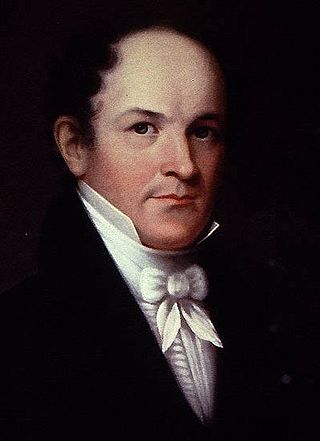
Thomas Nuttall was an English botanist and zoologist who lived and worked in America from 1808 until 1841.
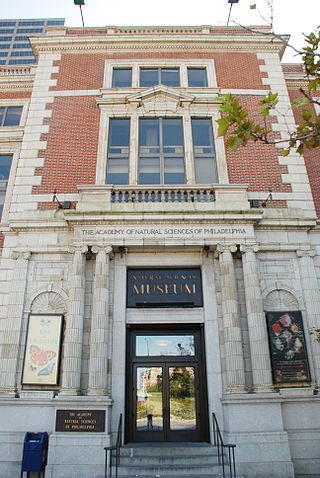
The Academy of Natural Sciences of Drexel University, formerly the Academy of Natural Sciences of Philadelphia, is the oldest natural science research institution and museum in the Americas. It was founded in 1812, by many of the leading naturalists of the young American republic with an expressed mission of "the encouragement and cultivation of the sciences". It has sponsored expeditions, conducted original environmental and systematics research, and amassed natural history collections containing more than 17 million specimens. The Academy also organizes public exhibits and educational programs for both schools and the general public.

Jules Pierre Verreaux was a French botanist and ornithologist and a professional collector of and trader in natural history specimens. He was the brother of Édouard Verreaux and nephew of Pierre Antoine Delalande.

Santa Rosa Island is the second largest of the Channel Islands of California at 53,195 acres. Santa Rosa is located about 26 miles (42 km) off the coast of Santa Barbara, California in Santa Barbara County and is part of Channel Islands National Park.

Sebastián Vizcaíno (1548–1624) was a Spanish soldier, entrepreneur, explorer, and diplomat whose varied roles took him to New Spain, the Baja California peninsula, the California coast and Asia.

Preston Ercelle Cloud, Jr. was an American earth scientist, biogeologist, cosmologist, and paleontologist. He served in the United States Navy, and led several field explorations of the U.S. Geological Survey. In academia, he was a member of the faculty of Harvard University, University of Minnesota, University of California, Los Angeles, and lastly University of California, Santa Barbara. He was best known for his work on the geologic time scale and the origin of life on Earth, and as a pioneering ecologist and environmentalist. His works on the significance of Cambrian fossils in the 1940s led to the development of the concept "Cambrian explosion," for which he coined the phrase "eruptive evolution."

Carl Henry Eigenmann was a German-American ichthyologist of the late nineteenth and early twentieth centuries, who, along with his wife Rosa Smith Eigenmann, and his zoology students is credited with identifying and describing for the first time 195 genera containing nearly 600 species of fishes of North America and South America. Especially notable among his published papers are his studies of the freshwater fishes of South America, the evolution and systematics of South American fishes, and for his analysis of degenerative evolution based on his studies of blind cave fishes found in parts of North America and in Cuba. His most notable works are The American Characidae (1917–1929) and A revision of the South American Nematognathi or cat-fishes (1890), in addition to numerous published papers such as "Cave Vertebrates of North America, a study of degenerative evolution" (1909) and "The fresh-water fishes of Patagonia and an examination of the Archiplata-Archelenis theory" (1909).

Rosa Smith Eigenmann was an American ichthyologist, as well as a writer, editor, former curator at the California Academy of Sciences, and the first librarian of the San Diego Society of Natural History. She "is considered the first woman ichthyologist in the United States." Eigenmann was also the first woman to become president of Indiana University's chapter of Sigma Xi, an honorary science society. She authored twelve published papers of her own between 1880 and 1893, and collaborated with her husband, Carl H. Eigenmann, as "Eigenmann & Eigenmann" on twenty-five additional works between 1888 and 1893. Together, they are credited with describing about 150 species of fishes.

Joseph Grinnell was an American field biologist and zoologist. He made extensive studies of the fauna of California, and is credited with introducing a method of recording precise field observations known as the Grinnell System. He served as the first director of the Museum of Vertebrate Zoology at the University of California, Berkeley from the museum's inception in 1908 until his death.

Tanya Atwater is an American geophysicist and marine geologist who specializes in plate tectonics. She is particularly renowned for her early research on the plate tectonic history of western North America.
The Western Australian Naturalist, is the peer-reviewed scientific journal of the Western Australian Naturalists' Club. It publishes original research on topics related to the natural history of Western Australia.
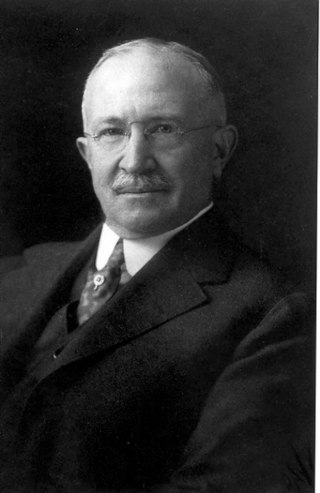
Charles Henry Gilbert was a pioneer ichthyologist and fishery biologist of particular significance to natural history of the western United States. He collected and studied fishes from Central America north to Alaska and described many new species. Later he became an expert on Pacific salmon and was a noted conservationist of the Pacific Northwest. He is considered by many as the intellectual founder of American fisheries biology. He was one of the 22 "pioneer professors" of Stanford University.

The Pacific Grove Museum of Natural History is a museum of natural history located near the Monterey Bay Aquarium in Pacific Grove, California, United States. The museum is a living field guide of the California Central Coast showcasing local native plants, animals, geology, and cultural histories.
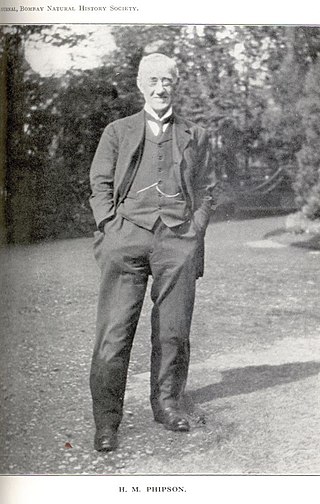
Herbert Musgrave Phipson, was a British wine merchant and naturalist who lived in Bombay, India, from 1878 to 1905. As the honorary secretary of the Bombay Natural History Society, editor of its Journal, and manager of the Society's business and outreach activities, he played an important role in establishing the journal's reputation as the foremost natural history journal in Asia; he also influenced public science policy in the Bombay Presidency. His efforts saw fruition in the establishment of the Natural Sciences section of the Prince of Wales Museum of Western India. Phipson, who was married to the pioneering physician Edith Pechey-Phipson, co-founded, with his wife, the Pechey Phipson Sanitarium for Women and Children in Nasik, India.
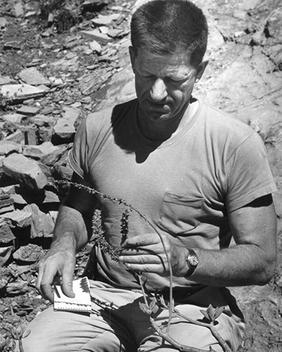
Reid Venable Moran was an American botanist and the curator of botany at the San Diego Natural History Museum from 1957 to 1982.

Sara Allen Plummer Lemmon, b. 1836, d. 1923 , was an American botanist. Mount Lemmon in Arizona is named for her, as she was the first white woman to ascend it. She was responsible for the designation of the golden poppy as the state flower of California, in 1903. A number of plants are also named in her honor, including the new genus Plummera, described by botanist Asa Gray in 1882.

Augustynolophus is an extinct genus of herbivorous saurolophine hadrosaur dinosaur which was discovered in the Moreno Formation in California, dating to the late Maastrichtian age, making it one of the last dinosaurs known from the fossil record before the Cretaceous–Paleogene extinction event.
Frederick "Fred" Baker was an American physician and civic activist in San Diego, California. He was the prime mover in founding the Marine Biological Institution, which became the Scripps Institution of Oceanography. He was also a co-founder of the Zoological Society of San Diego and thus of the San Diego Zoo. He was a naturalist and an amateur malacologist.
The Lorquin Entomological Society is a century-old association of professional and amateur entomologists, biologists and naturalists that meet regularly to study and promote entomology and natural history, especially about wildlife in and near Southern California.
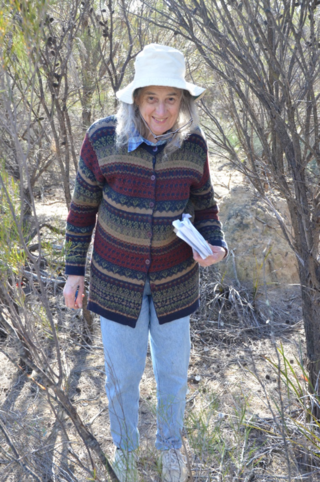
Barbara Anne York Main was an Australian arachnologist and adjunct professor at the University of Western Australia. The author of four books and over 90 research papers, Main is recognised for her prolific work in establishing taxonomy for arachnids, personally describing 34 species and seven new genera. The BBC and ABC produced a film about her work, Lady of the Spiders, in 1981.
References
- ↑ Foster & Hansen (1998). History of the Western Society of Naturalists. Santa Barbara, California: Santa Barbara Museum of Natural History.
- ↑ Evermann, Barton W. (1916-07-07). "Western Society of Naturalists". Science. 44 (1123): 15–16. doi:10.1126/science.44.1123.15-b. ISSN 0036-8075.
- ↑ "Naturalist of the Year". Western Society of Naturalists. Retrieved 15 March 2022.